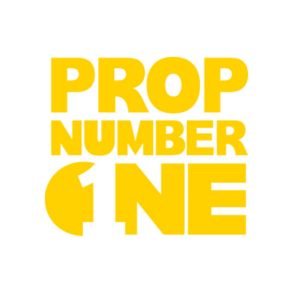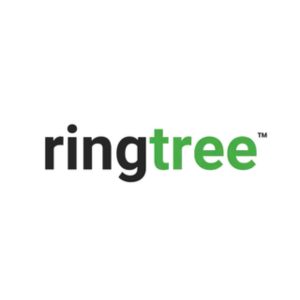
100 Day Savings Challenge vs. 100 Envelope Challenge: Which One is Right for You?
Saving money is an essential part of financial planning, yet many people struggle to maintain consistent savings habits. Two popular methods that have gained traction in recent years are the 100 Day Savings Challenge and the 100 Envelope Challenge. Both methods offer unique approaches to saving, allowing individuals to set goals and build financial discipline. In this blog, we’ll explore the differences between these two challenges, their benefits and drawbacks, and help you determine which one is the right fit for your savings goals.
Understanding the 100 Day Savings Challenge
What is the 100 Day Savings Challenge?
The 100 Day Savings Challenge is a straightforward method designed to help individuals save a specific amount over 100 days. This challenge typically involves saving a set amount daily, which can increase gradually as the challenge progresses. For instance, you might start by saving $1 on the first day and increase your savings by $1 each subsequent day. By the end of the 100 days, you would have saved a total of $5,050.
How It Works
To participate in the 100 Day Savings Challenge, you need to establish a daily savings routine. You can choose to save a fixed amount each day, follow a staggered savings plan where the amount increases, or even set aside a percentage of your income. The key is to commit to saving consistently, making it a part of your daily financial habits.
Benefits of the 100 Day Savings Challenge
The primary advantage of the 100 Day Savings Challenge is its flexibility. You can tailor the challenge to fit your budget and financial goals, allowing for a personalized experience. Additionally, this method promotes discipline and consistency in saving, as it encourages daily contributions. The challenge also allows for quick wins, as you can see your savings grow daily, providing motivation to continue.
Common Variations
While the traditional format involves saving progressively increasing amounts, many people adapt this challenge to fit their financial situation. For example, you could save a consistent amount throughout the challenge or adjust the increments based on your income levels.
Potential Challenges
Despite its advantages, the 100 Day Savings Challenge may pose challenges for some participants. Maintaining daily discipline can be difficult, especially if unexpected expenses arise. Additionally, the pressure to increase savings each day might discourage some individuals from completing the challenge.
Tips for Success
To succeed in the 100 Day Savings Challenge, establish a clear plan at the outset. Set reminders for your daily savings, track your progress, and celebrate small milestones along the way. Sharing your goals with friends or family can also provide accountability and motivation.
Real-Life Success Stories
Many individuals have successfully completed the 100 Day Savings Challenge, using the money saved for various purposes such as vacations, emergency funds, or debt repayment. Sharing these stories can inspire others to take on the challenge.
Exploring the 100 Envelope Challenge
What is the 100 Envelope Challenge?
The 100 Envelope Challenge is a physical savings method that involves using envelopes to help you organize your savings. Each envelope is assigned a number from 1 to 100, representing the amount you’ll save. The idea is to fill each envelope with cash corresponding to its number. For example, the first envelope would contain $1, the second envelope would contain $2, and so on, culminating in a total of $5,050 saved by the end of the challenge.
How It Works
To start the 100 Envelope Challenge, gather 100 envelopes and label each one with a corresponding number. Each week, or at your own pace, you fill envelopes with cash according to their numbers. Once you fill all the envelopes, you will have successfully saved $5,050. You can also modify the amounts based on your financial situation, making it as flexible as you need.
Benefits of the 100 Envelope Challenge
One of the significant benefits of the 100 Envelope Challenge is its tactile nature. Physically handling cash can make saving more real and engaging, as you can see and feel your progress. This method also allows for creativity; you can decorate or personalize your envelopes, making the challenge feel more like a fun project rather than a chore. Moreover, it promotes mindful spending; as you fill the envelopes, you become more aware of your financial habits.
Creative Variations
Participants often personalize the 100 Envelope Challenge to make it more engaging. Some choose to color-code envelopes for different savings goals, while others might fill envelopes in non-sequential order to add an element of surprise.
Possible Drawbacks
While engaging, the 100 Envelope Challenge requires physical cash, which may be inconvenient for those who prefer digital transactions. Additionally, it can be challenging to find the discipline to fill all 100 envelopes, especially if cash flow is tight.
Strategies for Successful Completion
To stay motivated throughout the 100 Envelope Challenge, consider setting a deadline for completion. Breaking down the process into smaller weekly goals can also make the challenge feel more manageable. Engaging friends or family in the challenge can add a social element that fosters accountability.
Personal Success Stories
Many participants have shared their experiences with the 100 Envelope Challenge, highlighting how they saved for specific goals like vacations, home improvements, or holiday shopping. These success stories can inspire others to embark on their savings journey.
Comparing the 100 Day Savings Challenge and the 100 Envelope Challenge
Structure and Commitment
The 100 Day Savings Challenge emphasizes daily commitment and can be adjusted according to your financial situation, making it ideal for individuals who prefer a structured approach. Conversely, the 100 Envelope Challenge offers a more hands-on experience, allowing participants to physically engage with their savings. Your choice may depend on whether you prefer a consistent daily routine or a more visual, interactive method.
Flexibility and Personalization
Both challenges offer flexibility, but in different ways. The 100 Day Savings Challenge can be easily tailored to fit any budget, whether you want to save small amounts or aim for larger contributions over time. The 100 Envelope Challenge allows you to choose your saving amounts based on your financial capabilities, making it adaptable to various income levels.
Motivation and Progress Tracking
Tracking progress is crucial for maintaining motivation. The 100 Day Savings Challenge offers daily reminders of your goals, helping you stay accountable. In contrast, the 100 Envelope Challenge provides a visual representation of your savings as you fill each envelope, which can be highly motivating for those who thrive on tangible rewards.
Community Support and Resources
Both challenges have garnered supportive communities online, where participants can share their experiences, tips, and progress. Engaging with others who are also participating can provide encouragement and motivation to stay committed to your savings goals.
Suitability for Different Saving Styles
Different individuals may find one challenge more appealing than the other based on their saving styles. For instance, visual learners may benefit more from the tangible aspect of the 100 Envelope Challenge, while those who prefer structured routines might gravitate toward the 100 Day Savings Challenge.
Cost Considerations
While both challenges are primarily free to participate in, the 100 Envelope Challenge may require a small initial investment for envelopes and cash. Conversely, the 100 Day Savings Challenge can often be conducted with minimal financial outlay, focusing on consistent savings.
Final Comparison
In the end, both challenges serve the same purpose: to encourage saving and promote financial discipline. Your ultimate choice may come down to personal preferences and how you envision your savings journey.
Which Challenge is Right for You?
Consider Your Savings Goals
When deciding between the 100 Day Savings Challenge and the 100 Envelope Challenge, consider your financial goals. If you’re looking to save a specific amount in a short time and prefer a structured approach, the 100 Day Savings Challenge may be more suitable. If you enjoy handling cash and prefer a more interactive savings method, the 100 Envelope Challenge could be the better fit.
Evaluate Your Commitment Level
Your personal commitment level can also influence your choice. If you thrive on daily routines and can commit to saving regularly, the 100 Day Savings Challenge will likely suit you well. However, if you prefer a more flexible, less daily commitment, the 100 Envelope Challenge might be the way to go.
Think About Your Saving Style
Consider your saving style. If you enjoy tangible savings methods and find motivation in physical rewards, the 100 Envelope Challenge can enhance your saving experience. On the other hand, if you prefer a more straightforward, consistent savings plan, the 100 Day Savings Challenge may align better with your financial habits.
Reflect on Your Financial Situation
Your current financial situation plays a significant role in choosing a savings method. If your income is variable, the 100 Envelope Challenge allows for more flexibility in terms of how much you save at any given time. Conversely, if you have a stable income, the 100 Day Savings Challenge’s structure might be beneficial.
Consider Long-Term vs. Short-Term Savings
Evaluate whether your focus is on long-term savings or short-term goals. The 100 Day Savings Challenge can be a great way to build up an emergency fund quickly, while the 100 Envelope Challenge can be more suited for saving towards specific purchases or experiences.
Seek Advice from Financial Experts
If you’re unsure about which challenge aligns best with your financial goals, consider seeking advice from a financial advisor. They can provide personalized insights based on your financial situation and savings objectives.
Try Both Challenges
Ultimately, there’s no rule saying you can only choose one challenge. If you’re feeling adventurous, consider trying both the 100 Day Savings Challenge and the 100 Envelope Challenge at different times. This will allow you to experience both methods and discover what works best for you.
Conclusion
Both the 100 Day Savings Challenge and the 100 Envelope Challenge offer unique approaches to saving money, each with its benefits and drawbacks. By evaluating your savings goals, commitment level, and personal preferences, you can choose the challenge that best suits your financial journey. Whether you opt for the structured approach of the 100 Day Savings Challenge or the tactile experience of the 100 Envelope Challenge, remember that the key to successful saving is consistency and dedication. Happy saving!

















